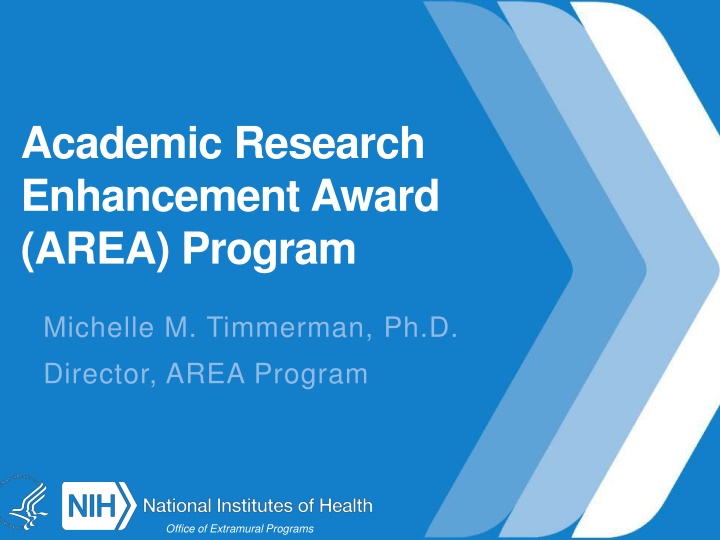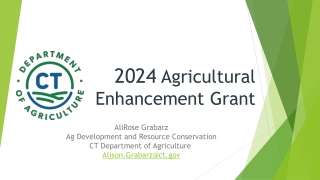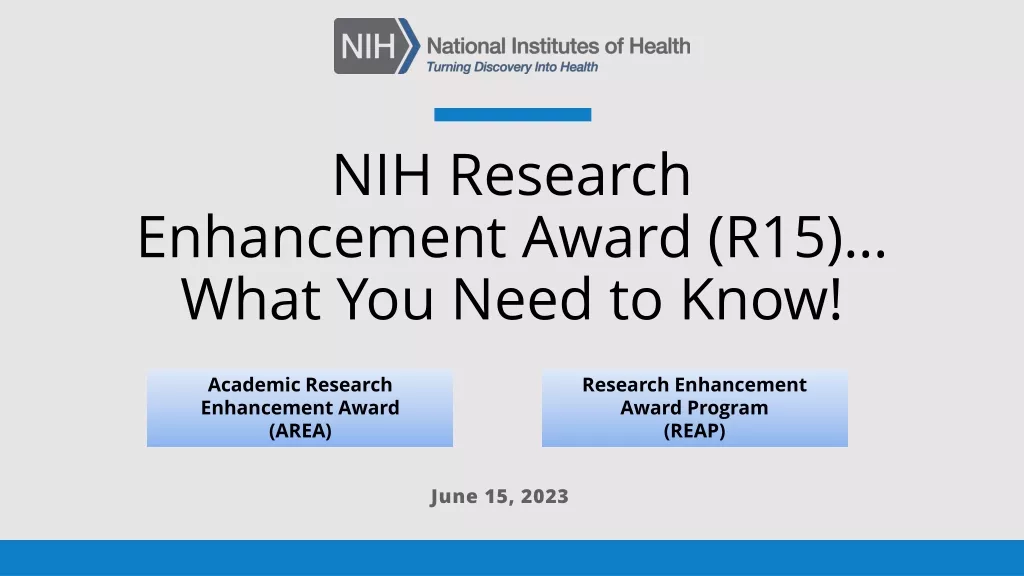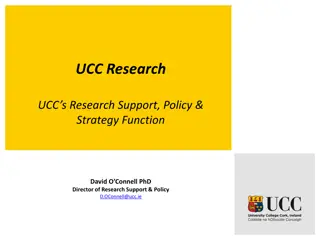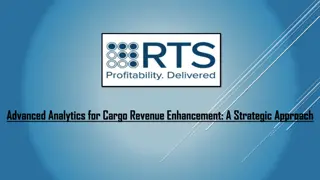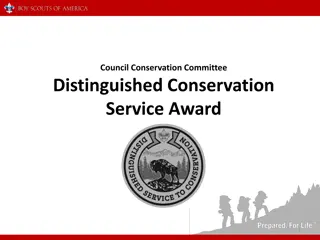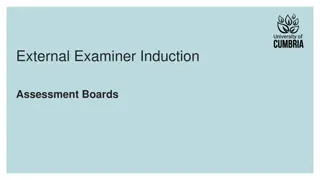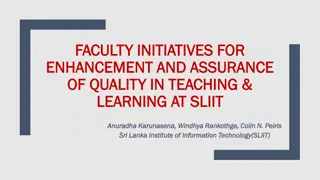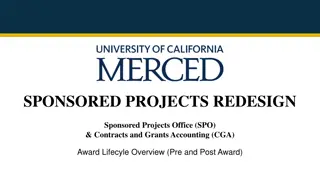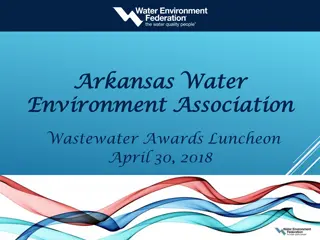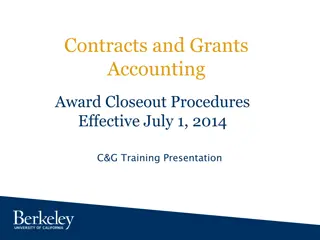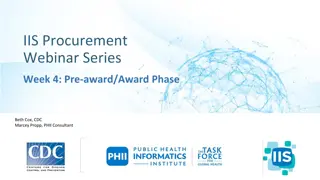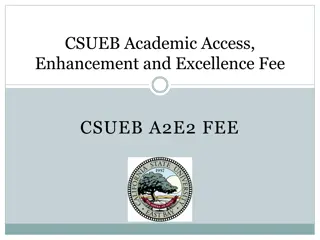Academic Research Enhancement Award (AREA) Program Overview
The Academic Research Enhancement Award (AREA) Program, directed by Dr. Michelle M. Timmerman, aims to support small-scale research projects, expose students to hands-on research, and strengthen research environments at educational institutions. With key features including a three-year project period and up to $300,000 in direct costs, the program focuses on enhancing research opportunities for undergraduates, graduates, and institutions with limited NIH grant funds.
Download Presentation

Please find below an Image/Link to download the presentation.
The content on the website is provided AS IS for your information and personal use only. It may not be sold, licensed, or shared on other websites without obtaining consent from the author.If you encounter any issues during the download, it is possible that the publisher has removed the file from their server.
You are allowed to download the files provided on this website for personal or commercial use, subject to the condition that they are used lawfully. All files are the property of their respective owners.
The content on the website is provided AS IS for your information and personal use only. It may not be sold, licensed, or shared on other websites without obtaining consent from the author.
E N D
Presentation Transcript
Academic Research Enhancement Award (AREA) Program Michelle M. Timmerman, Ph.D. Director, AREA Program Office of Extramural Programs
Overview of AREA program goals How R15 applications and projects differ from other Rs Applications, instructions, and projects Review Eligibility Strategies for success Institutional level PI level Office of Extramural Programs
Application logistics Funded through the R15 Parent: PA-16-200 Reissued April 18 for June 25 & later All NIH ICs participate except FIC and NCATS Success rates vary across ICs Office of Extramural Programs
Goals & scope in Part 2, Section I, Funding Opportunity Description Office of Extramural Programs 4
3 AREA Program goals: A Support small scale research projects Office of Extramural Programs
3 AREA Program goals: B Expose students in eligible environment to hands-on research Undergraduate (preferably) &/or graduate R15 goals & review criteria do not apply to High school students Post-baccalaureate participants Postdoc/residents/clinical fellows Office of Extramural Programs
3 AREA Program goals: C Strengthen the research environment of educational institutions that have not been major recipients of NIH research grant funds Office of Extramural Programs
Key features 3 year project period Up to $300,000 direct cost over 3 years Multiple PIs are allowed, if all eligible 12 page Research Strategy Grants are renewable Office of Extramural Programs
Questions to determine fit Does lab require >$100K/year? Improve eligible environment? Stimulate students interests? (Will they consider a research career?) Performed by undergrad /graduate students at the eligible institution? Office of Extramural Programs 9
Art of Crafting R15 Scientifically meaningful Feasible with Resources Effort Students Appropriate scope Office of Extramural Programs 10
Differences between R15 & other R: What you should know to write an R15 Unique application instructions Unique review Review criteria Management of review Eligibility Institution PI Office of Extramural Programs
Application instructions are in Part 2, Section IV, Part 2 Application instructions are in Part 2, Section IV, Part 2 Office of Extramural Programs 12
R15-specific instructions in: Project/Performance Site Locations(new) Other Project Information: Facilities & Other Resources (minor revision) Budget(minor revision) Biosketch (minor update) Research Plan: Research Strategy (new) Office of Extramural Programs 13
Additions to Facilities For institution or qualifying School Not PI s experience Profile of students # who obtained Bachelor & went on to doctoral degree in health-related sciences in last 5 years Special characteristics that make it appropriate for 3 goals of AREA Impact of R15 on PI & institution Any institutional support Limited use of special facilities elsewhere Office of Extramural Programs
Sample Facilities & Other Resources Fictional sample of R15-specific instructions http://grants.nih.gov/grants/funding/F-OR-annotate.doc Example and tool Not template Office of Extramural Programs 15
Common Profile Questions Numbers and/or percentages OK Required for institution (eligible HPS) Department information = allowable Ask admissions for stats Upfront if only partial data Not a diversity mechanism Office of Extramural Programs 16
Research Strategy Address R15 & non-R15 review criteria Demonstrate appropriateness of project and group, including students Describe supervision of students No fellowship-style training plans e.g., Coursework, seminars, conferences Office of Extramural Programs 17
Types of student involvement Perform & troubleshoot experiments Present at (lab) meetings & (campus) conferences (Help) design experiments Collect & analyze data Draft articles Collaborative interactions Office of Extramural Programs 18
Preliminary Data Reviewers instructed data not required Most funded R15 include convincing preliminary data Submitted preliminary data are evaluated Office of Extramural Programs 19
Demonstrate appropriateness of: Science, approach, hypothesis Personnel (including students) Performance without grad students / postdocs? Environment (including resources, equipment) Vintage but sufficient? Likely belongs on Facilities or Equipment R15-appropriate but restricting? Office of Extramural Programs 20
For many R15 awards Project synergizes with institution s efforts Feasibility of project is well documented Science Personnel Facilities, equipment, resources, etc. Office of Extramural Programs 21
No R15-specific budget restrictions Same items can be supported as R01 Student wages Collaborator salaries Travel As plan budget, keep R15 criteria in mind Undergraduate and/or graduate student Improvement of eligible institution Impact on PD/PI Office of Extramural Programs 22
Where to find review criteria Review criteria are in Part 2, Section V, Part 1 Office of Extramural Programs 23
R15 are clustered for review Implemented in response to applicant feedback In one time Special Emphasis Panel of R15 Panels are grouped by scientific topic In study section with R01, R21, R03 Streamlined against R15 only Reviewed sequentially, not mixed with other R Based on logistics to get best review for each cycle s applications Request study section in ARF Expertise needed to review application Office of Extramural Programs 24
Eligibility Eligibility Principal Investigator Institution Eligibility = applicant institution and PI only Eligibility collaborators Office of Extramural Programs
Where to find eligibility in the PA R15-specific eligibility criteria are in Part 2, Section III, Part 1 Office of Extramural Programs 26
PI eligibility Primary appointment at eligible institution Multiple PI OK if all eligible R15 intended to be only NIH research grant Eligible: Also serve as Key Personnel on another grant PI Impact is different Not Eligible: PI of other NIH research grants at time of award Multiple PI on another NIH research grant at time of award Research is broadly defined Research conference, training, construction grants Office of Extramural Programs
FAQ: R15 with near term grants Averages for PIs of R15s awarded in FY13 and FY14: 0 grants awarded same FY as R15 4 grants awarded next FY 43 applicants submitting 65 applications 220 R15 PIs awarded per year Office of Extramural Programs 28
Can I have ineligible collaborator? Eligibility answer: Yes Merit answer: But Majority of research should be directed by PI at grantee institution Student profile & student inclusion are for applicant/eligible component Consider the unique goals and criteria of the R15 No one can predict what level of involvement will be seen as counter to the R15 goals Pre-PA-12-006, unique attributes not included in review criteria Office of Extramural Programs
Institution must be an accredited public or non-profit private school Examples meeting this criterion: Community College: AS Dental Hygiene, AS biology Small liberal arts college: BA psychology, BS biology Standalone Graduate Health Sciences University: MS Physician Assistant, MPH, MS Dental Hygiene Major Research University: DVM, PhD biostatistics, MS Microbiology, DrPH Office of Extramural Programs 30
Institution must be an accredited public or non-profit private school Must grant baccalaureate or advanced degrees in biomedical or behavioral sciences Examples meeting this 2nd criterion: Community College: AS Dental Hygiene, AS biology Small liberal arts college: BA psychology, BS biology Standalone Graduate Health Sciences University: MS Physician Assistant, MPH, MS Dental Hygiene Major Research University: DVM, PhD biostatistics, MS Microbiology, DrPH Office of Extramural Programs 31
Institution must be an accredited public or non-profit private school Must grant baccalaureate or advanced degrees in biomedical or behavioral sciences Institution must not receive research support from NIH totaling more than $6 Million per year in each of 4 of the last 7 years. Publicized on financial ineligibility list Examples meeting this 3rd criterion: Community College: AS Dental Hygiene, AS biology Small liberal arts college: BA psychology, BS biology Standalone Graduate Health Sciences University: MS Physician Assistant, MPH, MS Dental Hygiene Major Research University: DVM, PhD biostatistics, MS Microbiology, DrPH Office of Extramural Programs 32
Institution must be an accredited public or non-profit private school Must grant baccalaureate or advanced degrees in biomedical or behavioral sciences Institution must not receive research support from NIH totaling more than $6 Million per year in each of 4 of the last 7 years. Major Research University School of Health Profession? What if the main campus is listed? What if Other Academic is listed Major Research University, Branch Campus? Office of Extramural Programs 33
Branch campus uses same criteria Only Main Campus is accredited = ineligible Be an accredited public or non- profit private school Ask provost; NIH does not have a list Confer own baccalaureate or advanced degrees in biomedical or behavioral sciences Main campus confers degrees = ineligible Branch Campus must not receive more research funding than the AREA financial limit. Publicized on financial ineligibility list Office of Extramural Programs 34
Separately considered Health Professional School uses additional criteria Be an accredited public or non- profit private school Ask provost; NIH does not have a list Confer own terminal health professional degree. If University, Graduate School, etc., confers degrees, HPS is ineligible Examples of Terminal Health Professional degrees: MD, DDS, DO, PharmD, DrPH, OD, DPT, DC, ND, DPM, BSN HPS must not receive more research funding than the AREA financial limit. Publicized on financial ineligibility list Office of Extramural Programs 35
Other Academic = Sum of non- health professional school + Engineering (Biomedical Engineering) + Human Biology + Kinesiology + Arts & Sciences + Agriculture & Life Sciences +Biotechnology Institute + Law + Education Office of Extramural Programs 36
Applications from eligible health professional school Must include students from this unit (and/or undergrads from any unit) Impact on this unit is evaluated Graduate students from Other Academic do not count Office of Extramural Programs 37
Financial ineligible list is on AREA website http://grants.nih.gov/grants/funding/area-ineligible.htm City listed does not necessarily mean that campus only (see Branch campus) Lists whether cap was met by Other Academic & Health Professional Schools Updated in April; university should check for PIs Office of Extramural Programs 38
Characteristics of eligible institutions and components 96% of eligible institutions & components never exceeded limit in any year (0/7) 90% would be still eligible if limit were halved Average annual support ~ $1 million On average half of R15 are the only R15 awarded to an institution that year Office of Extramural Programs 39
After the award: Progress Report Must list students in Section D - Participants, not just mention in research update Students who worked at least 1 person month per year even if unpaid must be listed And must have Commons ID They should complete Commons Person Profile Crucial to tracking students and determining success of AREA program as a whole Office of Extramural Programs 40
FY06-15 Funding trends 1,800 30.0% $150K $300K $110 M $88 M $76 M 1,600 $77 M 25.0% $78 M 1,400 Number of Applications & Awards 1,200 20.0% $52 M Succes rate 1,000 $45 M 15.0% $44 M $37 M 800 $38 M 600 10.0% 400 5.0% 200 0 0.0% 2006 2007 2008 2009 2010 2011 2012 2013 2014 2015 Fiscal Year Number of Applications Number of Awards Success Rate Office of Extramural Programs
Strategies for success Institution Investigator Office of Extramural Programs
Advice from PUI PIs Research Strategy should address feasibility with students Involve first years & sophomores Multi-semester commitment Lab classes teach experimental design Consider cultural exposure to major research institutions in lieu of summer REU Assess what students need to participate Help students plan workload realistically Involve students in training new students Consider a (part time/seasonal/dept) technician Office of Extramural Programs 43
There is no winning formula No one can give specifics of what will score well Do not treat a successful [or not] application as an iron-clad template [of what not to do] How many students How many papers What % of a collaborator What % of special facilities What amount or type of institutional support What type of environment Office of Extramural Programs
Build a vital research environment Understand the NIH extramural research program Know guidelines, deadlines, submission & correction process, and review criteria Create an environment in which grants office can succeed Training Protected time Support to set expectations Make a commitment to establishing an environment in which research can succeed Start up packages for equipment and supplies Pilot grants, student research grants Credit for student involvement in research Office of Extramural Programs
Build a research environment Consider the importance of collaborative research in establishing a successful research environment Do not pressure investigators to apply if their projects are not ready for peer review Quality over quantity; submit best application Get some feedback from the reviewers Help investigators with the Facilities and Other Resources section of application Profile of student body Description of the institution and research environment Letter of institutional commitment to research project Maintain as resource & revise per Summary Statements Office of Extramural Programs
Strategies of Successful PIs Include a collaborator or consultant if you don t have the necessary expertise or resources Understand the review criteria and the review criteria questions Each question should be addressed in the application In A1, respond thoroughly and diplomatically to all of the reviewer comments AREA grant is research award, not training award Focus on hands-on research not course work Describe PI s role in research & supervision Office of Extramural Programs
More Strategies of Successful PIs Address the AREA-specific programmatic goals in the application; these are reflected in review criteria Support meritorious research Research should contribute to the field Results should be publishable Expose students to research Profile of available and former students at the institution Experience of the investigator in working with students How students will be incorporated into the research project How students will benefit from this research experience Strengthen the research environment The suitability of the institution for an award The impact the AREA grant will have on the institution Office of Extramural Programs
AREA Program Resources Twitter @NIHR15 Facebook NIH AREA Program Resources https://grants.nih.gov/grants/funding/area/resources.htm Main webpage http://grants.nih.gov/grants/funding/area/area.htm Institutional Eligibility https://grants.nih.gov/grants/funding/area-ineligible.htm Institute/Center contacts http://grants.nih.gov/grants/guide/contacts/parent_R15.html AREA mailbox R151@mail.nih.gov Office of Extramural Programs
